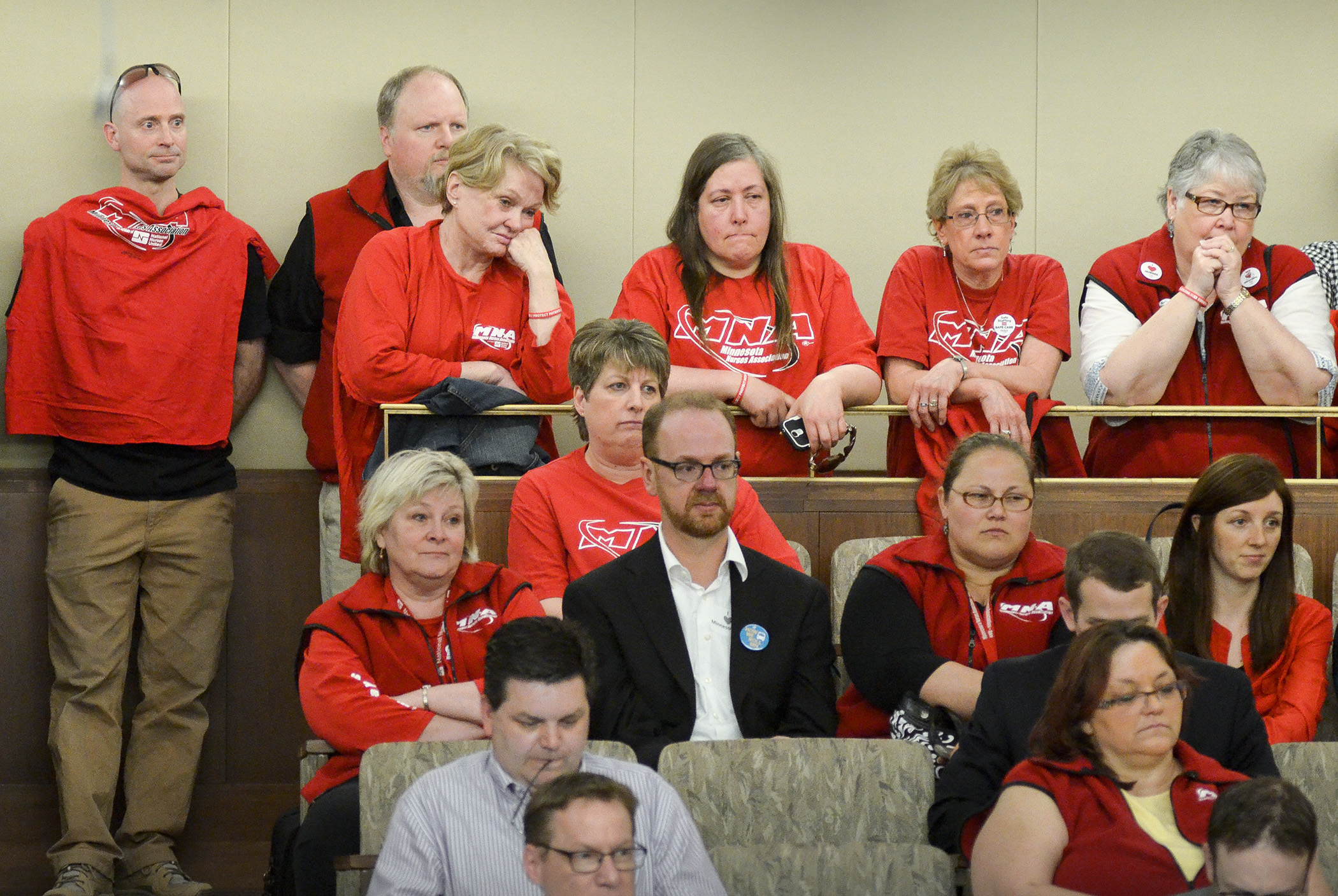Committee takes no action on bill to establish nurse staffing levels

Members of the Minnesota Nurses Association are advocating for a bill that would establish a working group to study nurse staffing levels as they relate to a patients’ quality of care.
HF1654, also referred to as the Safe Patient Standard Act, gained an informational hearing Thursday before the House Health and Human Services Finance Division, which took no action. Sponsored by Rep. Joe Atkins (DFL-Inver Grove Heights), the bill awaits action by the House Health and Human Services Reform Committee and has no Senate companion.
Previously before legislators in earlier sessions, the measure, which resembles a California-based staffing model, is opposed by the Minnesota Hospital Association and the Minnesota Chamber of Commerce.
Establishing quotas on the nursing floor does not equate to quality of care, and it would limit staffing flexibility and innovation, said Lawrence Massa, association president.
Kathrine Drusch, who has worked in the nursing industry for 28 years, countered that if charge nurses and administrators worked beside nurses and patients, they would see how nurses struggle every day to accomplish their tasks.
“What I’m not hearing is putting the patient first,” said Drusch, a registered nurse at North Memorial Hospital.
Substandard staffing leads to delayed treatment, including pain management and causes longer hospital stays, said Carrie Mortrud, MNA government affairs staff specialist. MNA represents about 20 percent of the state’s 95,700 licensed registered nurses.
Nurses have two reports they can file when a staffing incident occurs. The requisite incident form is completed and sent to an internal facility department when a patient falls or for similar circumstances. The other form is a Safe Staffing Form that is documentation by a nurse that staffing levels created unsafe conditions for patients or staff. That form is sent to MNA, and a copy should be given to the employee’s charge nurse or manager. But hospital leaders allege that nurses are not following the chain of reporting and are not notifying their managers but still sending reports to MNA.
Rep. Erin Murphy (DFL-St. Paul), a former nurse, said the issue has been at a stalemate between nurses and administrators for years and needs to be resolved.
Atkins said the recent eight point drop in health care quality scores of Minnesota hospitals shows that something needs to change, and his bill would begin that discussion.
Related Articles
Search Session Daily
Advanced Search OptionsPriority Dailies
Ways and Means Committee OKs proposed $512 million supplemental budget on party-line vote
By Mike Cook Meeting more needs or fiscal irresponsibility is one way to sum up the differences among the two parties on a supplemental spending package a year after a $72 billion state budg...
Meeting more needs or fiscal irresponsibility is one way to sum up the differences among the two parties on a supplemental spending package a year after a $72 billion state budg...
Minnesota’s projected budget surplus balloons to $3.7 billion, but fiscal pressure still looms
By Rob Hubbard Just as Minnesota has experienced a warmer winter than usual, so has the state’s budget outlook warmed over the past few months.
On Thursday, Minnesota Management and Budget...
Just as Minnesota has experienced a warmer winter than usual, so has the state’s budget outlook warmed over the past few months.
On Thursday, Minnesota Management and Budget...